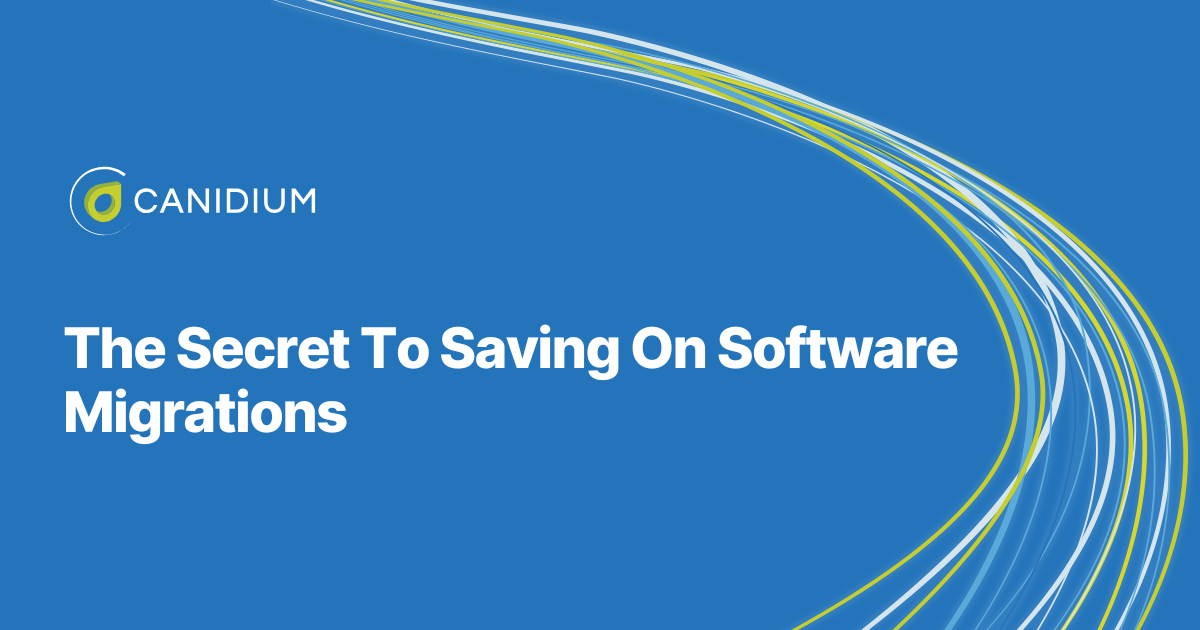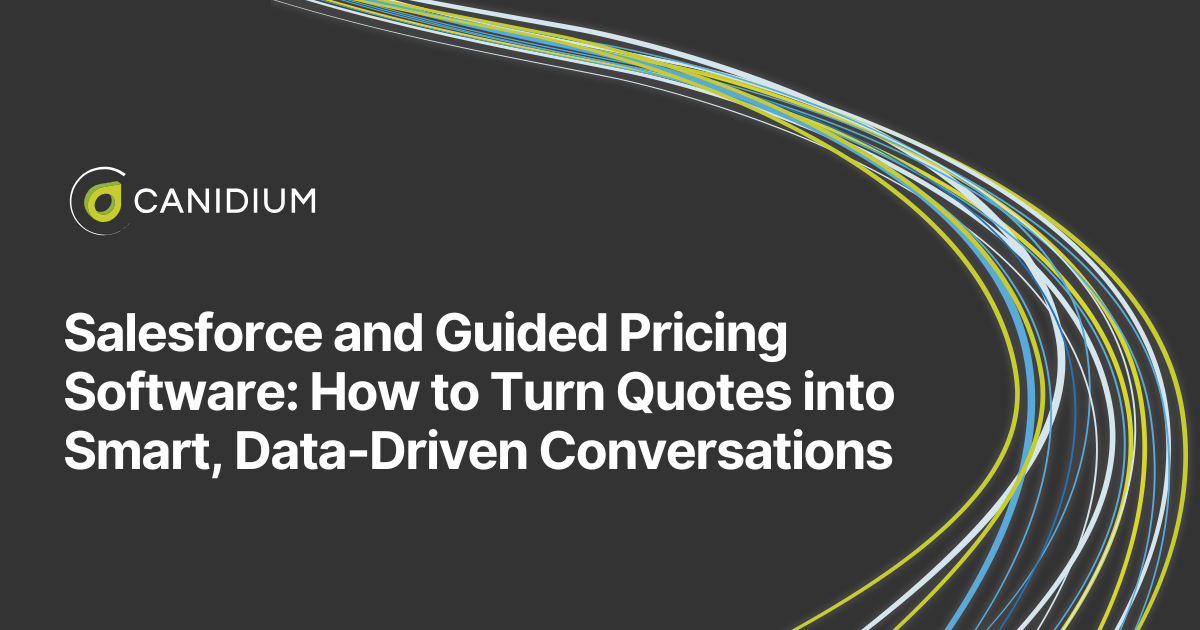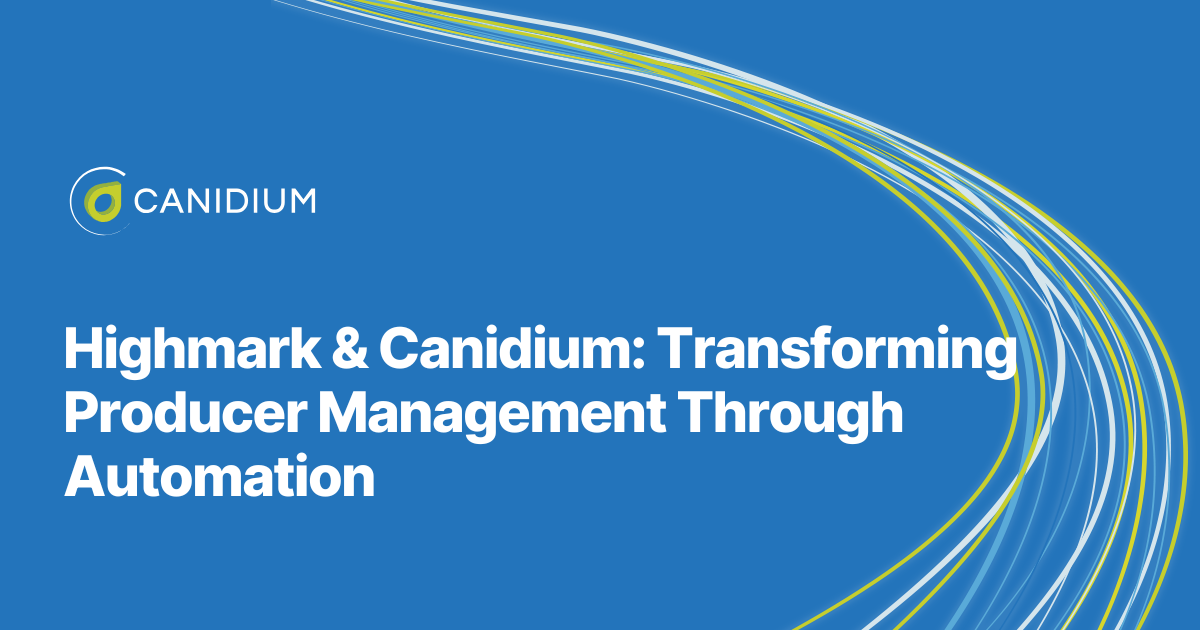The question underpinning every investment decision is what your ROI will be. You need to be able to determine if the benefits of implementing a new software solution will outweigh the costs, especially when it comes to investing in pricing software.
Our Pricefx solution implementation experts at Canidium help companies determine if pricing software is the right investment for their financial goals. We oversee pricing solution implementations from start to finish and offer ongoing support through managed service contracts to enterprise and mid-level clients.
Based on our in-depth understanding of Pricefx's ROI, here's a guide to estimating your returns.
- 3 Pricefx Factors That Determine Your ROI
- Costs to Account For
- How to Mitigate Costs and Increase Your ROI
- Estimating Your Pricefx ROI
3 Pricefx Factors That Determine Your ROI
The first component of calculating your estimated ROI is determining the potential returns you will receive. From our experience, there are three key factors that play into a company's Pricefx implementation ROI:
1. Efficiency Gains
A recent study found that 94% of respondents say they perform repetitive, time-consuming tasks in their professional role. The majority of these types of tasks can be automated, reducing the workload on these employees, and potentially even increasing their productivity.
Considering the fact that "being overworked" was the most commonly cited reason for work-related stress, eliminating time-consuming tasks can free up your employees, allowing them to focus on higher-level tasks that generate greater value. In fact, 2 out of 3 knowledge workers already report that automation has helped increase their productivity.
Automation has the capacity to increase the efficiency of your current pricing team, generating greater returns without increasing overhead.
While automation tools are diverse in form and features, pricing is one of the most lucrative automation investments. Pricing solutions allow you to optimize your product or service prices to suit current market conditions or rapidly shifting priorities. The software handles the granular administrative processes required to facilitate these changes without manual interventions. In this regard, the most immediate benefit of Pricefx is the efficiency it introduces into your pricing processes. With Pricefx, businesses can achieve more with fewer resources, automating tasks that previously required extensive manual intervention.
Because of the financial potential inherent in these efficiency gains, the degree to which you can leverage Pricefx to increase your organizational productivity without increasing costs is one of the controlling factors that determine your ROI.
2. Dynamic Pricing Capacity
When B2B and B2C companies utilize AI-based tools to enhance the most impactful pricing elements within their organizations, they can achieve an increase in EBITDA of 2 to 5 percentage points. These tools provide advanced analytics and reporting tools that allow leadership and sales teams to back their pricing decisions on business intelligence. At the same time, pricing solutions enact these changes rapidly, increasing the speed with which you see returns from optimized prices.
Let's examine an example of how dynamic pricing changes would work for a manufacturer to get a better understanding of how these tools increase profits:
- Base Price Setting: The manufacturer sets a base price for their products based on historical data, including product popularity, typical sales volumes, and production costs.
- Demand Observation: The manufacturer uses software to monitor how quickly products are selling. If sales are faster than expected, indicating high demand, the system recognizes this as an opportunity to increase prices.
- External Factor Integration: The system also integrates data such as raw material costs, major industry events (like raw material availability or formula changes), and competitor pricing. For example, if a supply chain disruption limits inventory, the software raises prices accordingly.
- Real-Time Price Adjustment: As market conditions change, the manufacturer continuously adjusts prices. If a product is not selling as expected, prices might drop to encourage more purchases. Conversely, if a product is selling well and inventory levels are low, prices might increase as the remaining stock becomes more valuable.
- Customer Segmentation: Manufacturers might also use customer data to adjust pricing. For instance, if a customer frequently places bulk orders, prices shown to that customer might be lower based on the prediction that they are motivated by volume discounts.
Alternatively, you may decide to change your pricing strategy independent of algorithmic demand surges. Pricefx facilitates quicker changes under these circumstances as well. For instance, Canidium's Pricefx implementation team worked with a company that faced significant challenges due to its outdated pricing processes during a period of high inflation and frequent tariff changes. The company relied heavily on manual procedures, using Excel spreadsheets to manage and analyze data pulled from their Enterprise Resource Planning (ERP) system and other sources. This cumbersome process resulted in a protracted 90-day cycle to implement new list prices, during which time they continually incurred higher costs without the ability to adjust prices accordingly, eroding their profit margins.
Recognizing the need for a more efficient solution, the company turned to Canidium to implement Pricefx. As a result, the company was able to revolutionize its pricing strategy by integrating directly with its ERP and other systems, facilitating real-time data flow and eliminating the manual data handling that had previously bogged down its process. Pricefx's automated price optimization tools allowed for swift recalculations and adjustments based on real-time market data and predefined rules, significantly speeding up the price adjustment process. Moreover, the automated workflow for pricing approvals reduced the need for lengthy email exchanges, cutting down the approval time dramatically.
With Pricefx, the company was able to reduce the price change cycle from 90 days to under a week, enabling them to respond effectively to rapid cost fluctuations and market conditions. This not only helped maintain their profit margins but also enhanced their competitive edge in a volatile market.
With all this in mind, the degree to which your current pricing processes are holding you back from reaching your maximum potential margins will impact your final ROI. While companies can expect to see increased profits from the ability to quickly implement pricing changes, those with the most inefficient current workflows will see the biggest investment returns.
3. Deal Guidance and Optimized Prices
Before the availability of pricing software, sales teams had no more to go on than experience and educated guesses when making pricing decisions. They didn't have data and reporting at their fingertips and thus couldn't see price points for similar customers and products and then use that information to increase close rates while also maximizing margins.
For many companies, the primary goal of implementing Pricefx is to ensure that individuals responsible for making pricing decisions—whether they are field sales representatives or order desk personnel—are equipped with the tools and data they need to make informed, fast, and effective pricing decisions.
The concept revolves around enabling these key decision-makers to access optimized prices that are backed by comprehensive analytics. This includes statistical data such as win percentages at various price points, which helps in understanding the price elasticity and potential customer responses. By integrating such data, decision-makers can maximize revenue on each deal without jeopardizing the likelihood of closing the sale. This is compounded by the ability to adjust prices quickly and accurately. Consequently, Pricefx ensures that the company can respond to market dynamics and customer needs more effectively, making the most of every sales opportunity.
The degree to which there is room to improve your team's pricing decisions will determine how great your ROI is. You're likely to see improvements regardless of how accurate your team was prior to your pricing solution implementation, as the analytical capacity of the solution simply outpaces the ability of human beings. However, the scale of the increase in profits is variable, depending on the individual factors of each company.
Costs to Account For
There are two components of calculating your ROI, the first being the returns, and the second, of course, being the investment costs.
While ongoing maintenance fees and managed services may also come into play to some degree, the two main cost components of implementing Pricefx are:
- Software Licensing Fees: These are ongoing costs paid for using the Pricefx software, which provides the tools necessary for dynamic pricing and pricing analytics.
- Implementation Fees: These are one-time costs that cover the setup, integration with existing systems, and initial training required to get Pricefx up and running.
While specific numbers may vary based on the scale of implementation and the specific needs of a business, understanding these cost categories is essential for planning and budgeting.
Your software licensing fees will be paid directly to your solution provider. Your specific licensing fee amount depends on factors unique to each company's business goals and desired solution configuration. To understand how much Pricefx costs, check out this pricing range.
Similarly, your Pricefx implementation costs will also depend on your project's size, complexity, and ultimate goals. To understand the full scope of a Pricefx implementation project, check out this Buyer's Guide.
While your specific implementation costs will vary, here are Canidium's general estimates based on project size:
.png?width=1920&height=1080&name=Medium%20(7).png)
How to Mitigate Pricefx Costs and Increase Your ROI
While Pricefx is a significant investment, the returns are worth it. Consider what a pricing solution implementation could do for a $2 billion company. If Pricefx helps improve pricing strategies and profitability by just 1%, this could lead to a $20 million increase in profits annually. This substantial figure goes directly to your bottom line, requiring no additional resources or operational expansions to facilitate.
The concept of the power of 1% further emphasizes the potential financial impact of small improvements in pricing. By focusing on increasing prices where feasible, without incurring additional costs, companies can see direct profit gains. Unlike strategies that rely on volume increases, which come with additional production and variable costs, price improvements directly enhance profit margins.
At the same time, by working with an experienced SI partner, you can mitigate your investment costs with two smart implementation practices:
- Firstly, by opting for a quick implementation, companies can realize the benefits of Pricefx faster, thus shortening the time to achieve ROI. Each day gained through early use translates to potential savings and additional revenue. For example, our Pricefx implementation team has designed, configured, and integrated the solution on a 4-6 month timeline.
- Secondly, comprehensive user training during implementation allows your workforce to leverage the tool more effectively. This not only shortens the time to value but also reduces the learning curve and potential disruptions associated with new software implementations.
Estimating Your Pricefx ROI
Your exact ROI on a Pricefx implementation is a product of many different costs and benefits unique to your organization. As a result, it is hard to provide a singular figure that covers all business scenarios. That said, it is possible to estimate your potential ROI based on your own understanding of how your organization fits into the costs and benefits presented in this article.
At the same time, you may also want to take Pricefx's own estimations into account. The company estimates that organizations may see up to a 15x ROI in the first 12 months with a 8.4% margin improvement. The solution total costs vs. total profitability gain is also estimated by Pricefx to be 6%.
Seeing Returns From Pricefx
Estimating your ROI with Pricefx involves analyzing both its costs and the substantial benefits it delivers. Pricefx enhances operational efficiency by automating time-consuming tasks, thus allowing employees to focus on higher-value activities and boosting productivity. It also supports dynamic pricing, enabling real-time price adjustments based on market conditions, which optimizes profitability.
Furthermore, Pricefx empowers sales teams with data-driven insights for informed pricing decisions, maximizing revenue on each transaction. The costs associated with implementing Pricefx—primarily software licensing and implementation fees—are recovered in as little as 1 year.
To learn more about starting your pricing solution implementation, read this guide to beginning a Pricefx project.








